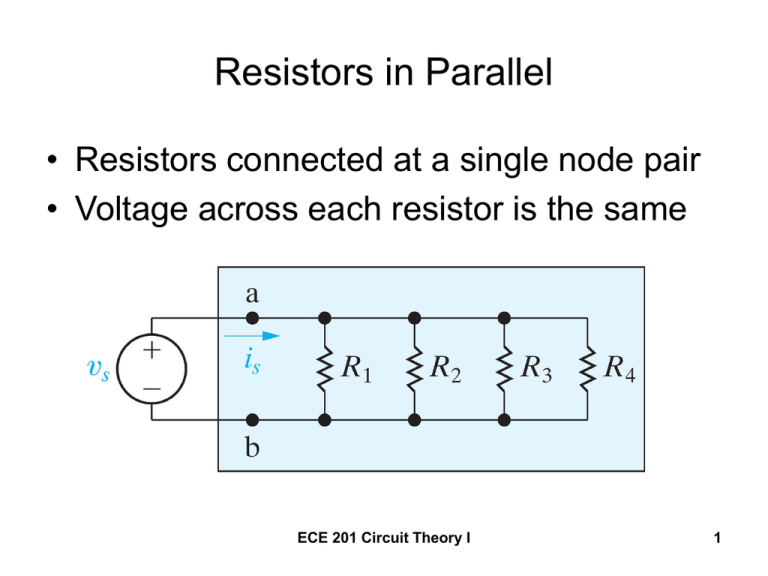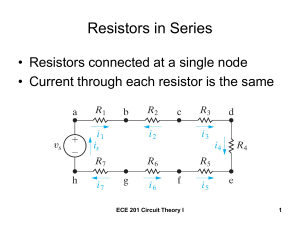Resistors in Parallel • Resistors connected at a single node pair
advertisement

Resistors in Parallel • Resistors connected at a single node pair • Voltage across each resistor is the same ECE 201 Circuit Theory I 1 Caution on Parallel Connection • Here, R1 and R3 are not in parallel • Resistor R1 is in parallel with the series combination of R2 and R3 ECE 201 Circuit Theory I 2 Apply KCL and Ohm’s Law i1 i2 i3 i4 iS i1 i2 i3 i4 vS i1R1 i2 R2 i3 R3 i4 R4 ECE 201 Circuit Theory I 3 Solving for each current vS i1 R1 vS i2 R2 vS i3 R3 vS i4 R4 ECE 201 Circuit Theory I 4 Substitute back iS i1 i2 i3 i4 1 vS vS vS vS 1 1 1 iS vS R1 R2 R3 R4 R1 R2 R3 R4 iS 1 1 1 1 1 vS Req R1 R2 R3 R4 ECE 201 Circuit Theory I 5 Equivalent Circuit k 1 1 1 1 1 ..... Req i 1 Ri R1 R2 Rk k Geq Gi G1 G2 ..... Gk i 1 ECE 201 Circuit Theory I 6 Special case for only 2 resistors 1 1 1 R2 R1 Req R1 R2 R1 R2 R1 R2 Req R1 R2 ECE 201 Circuit Theory I Product Sum 7 Summary • Resistors in parallel have the same voltage • The resistors can be replaced by an “equivalent” resistance whose conductance is the sum of the individual conductances • The “equivalent” resistor is smaller than the smallest of the individual resistors ECE 201 Circuit Theory I 8




